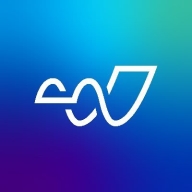

Find out in this report how the two User Entity Behavior Analytics (UEBA) solutions compare in terms of features, pricing, service and support, easy of deployment, and ROI.


LogRhythm UEBA enables your security team to quickly and effectively detect, respond to, and neutralize both known and unknown threats. Providing evidence-based starting points for investigation, it employs a combination of scenario analytics techniques (e.g., statistical analysis, rate analysis, trend analysis, advanced correlation), and both supervised and unsupervised machine learning (ML).
Microsoft Defender for Identity integrates with Microsoft tools to monitor user activity, providing advanced threat detection and analysis using AI. It enhances proactive threat response and security visibility, making it essential for securing on-premises and cloud environments like Active Directory.
Microsoft Defender for Identity offers comprehensive monitoring and AI-driven user behavior analysis. It detects threats through real-time alerts and identifies lateral movements and entity tagging, ensuring robust security management. With excellent visibility via its dashboard, it supports customized detection rules and seamlessly integrates with SIEM platforms. While SecureScore and SecureScan provide robust environment security, there is room for improvement in cloud security, on-premises application integration, and remediation capabilities. Azure integration is limited, and the administrative interface could be more user-friendly. Users experience frequent false positives, affecting threat detection efficiency.
What key features stand out in Microsoft Defender for Identity?In specific industries such as education and finance, Microsoft Defender for Identity is crucial for securing on-premises Active Directory and Azure Active Directory environments. It effectively detects suspicious activities and manages conditional access policies, offering user and entity behavior analytics, endpoint detection and response capabilities. This helps prevent unauthorized access and strengthens overall security, making it an invaluable asset for organizations aiming to safeguard their digital infrastructure.
We monitor all User Entity Behavior Analytics (UEBA) reviews to prevent fraudulent reviews and keep review quality high. We do not post reviews by company employees or direct competitors. We validate each review for authenticity via cross-reference with LinkedIn, and personal follow-up with the reviewer when necessary.